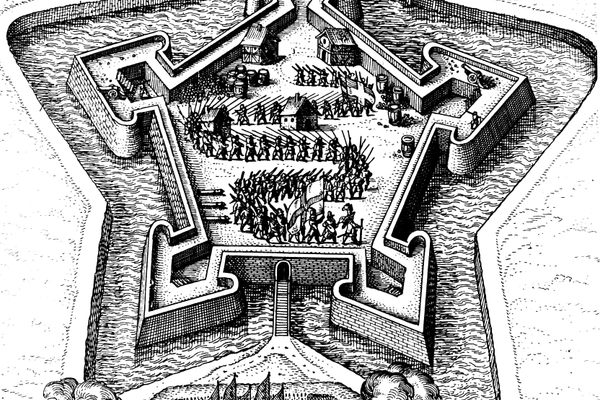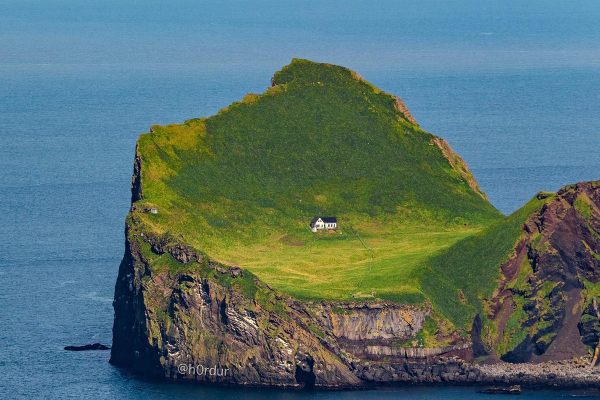Relics of the World’s Fair: Montreal
Expo 67 postcard (via Joe Wolf)
After visiting Paris, Chicago, Barcelona, and New York City, Atlas Obscura’s tour of World’s Fair relics stops next in Montreal, Canada, which only hosted one fair — but it left two of the city’s most eye-catching buildings behind.
Montreal Biosphere (photograph by Hilverd Reker)
One of the landmarks remaining from Montreal’s Expo 1967 is a visitor from Canada’s neighbor to the south that stayed long after the fair. The Biosphère was originally the United States Pavilion — a 20-story geodesic dome designed by Buckminister Fuller. Fuller championed the geodesic dome as a design for a livable space that used only one-fifth the materials used in a more conventional building.
Expo 67 Geodesic Dome (photograph by Shawn Nystrand)
The dome’s eye-catching design proved Fuller right — it was made of only a steel framework was sheathed in a clear acrylic skin. Inside were exhibits on such Americana as patchwork quilts and Raggedy Ann dolls, various presidential campaign memorabilia, exhibits on NASA’s space program, props from popular Hollywood films, and Elvis Presley’s guitar.
Fair organizers left the giant dome behind after the Expo, and for a while the city of Montreal used it as a general recreational space until a fire in 1976 burned the acrylic skin away. The sphere was then closed to the public for 15 years.
Fire At The Biosphere (photograph by Gilles Herman)
Then, in 1995, the City of Montreal and Environment Canada re-opened the Biosphere as an environmental museum and eco-study center, with an emphasis on the ecosystem of the Great Lakes and the St. Laurence Seaway. The free museum also offers a changing series of exhibitions on environmental issues, such as pollution, climate change, biodiversity and sustainable development.
Inside the Biosphere (photograph by Alex Williams)
Another architectural marvel at the Expo was more home-grown.
The Habitat housing complex, presented as a model “future community,” was designed by Israeli-Canadian architect Moshe Safdie as his master’s thesis project at nearby McGill University.
photograph by Jean Hambourg
Inspired by how Lego blocks snapped together, he proposed a similar sort of modular design for constructing apartment complexes. The Habitat complex, built using his design, became an exhibit in its own right, allowing curious visitors inside some of the sample module housing units; part of the complex also served as housing for visiting dignitaries to the fair.
After the fair, the individual apartments were put on the real estate market. Safdie originally hoped the modular units would be a means to develop affordable housing, but the building’s high popularity have since resulted in equally high costs.
photograph by Pascal Walschots
Habitat 67 (via Wikimedia)
While those are two of the Expo 67’s most architecturally magnificent, there was much more to the Montreal World’s Fair. Below are some photographs of the grand event, in all its futuristic 1960s glory:
The Expo-Express train station (via Wikimedia)
The USSR Pavilion (via Wikimedia)
Inside the USSR Pavilion (via Wikimedia)
Ontario Pavilion (via Wikimedia)
The Canadian Paper Pavilion (photograph by Laurent Bélanger)
The monorail (photograph by Laurent Bélanger)
France Pavilion (photograph by Laurent Bélanger)
Ethiopia and Morocco Pavilions (photograph by Laurent Bélanger)
Mexico Pavilion (photograph by Laurent Bélanger)
The Kaleidoscope (photograph by Laurent Bélanger)
British Racing Motors car (via National Archives UK)
Man in the Community and Man and His Health Pavilions (via Wikimedia)
photograph by Shawn Nystrand
The opening ceremonies site today (photograph by colink./Flickr user)
Stay tuned for more in our series on World’s Fair relics, and be sure to visit Paris, Chicago, Barcelona, and New York City.




















Follow us on Twitter to get the latest on the world's hidden wonders.
Like us on Facebook to get the latest on the world's hidden wonders.
Follow us on Twitter Like us on Facebook